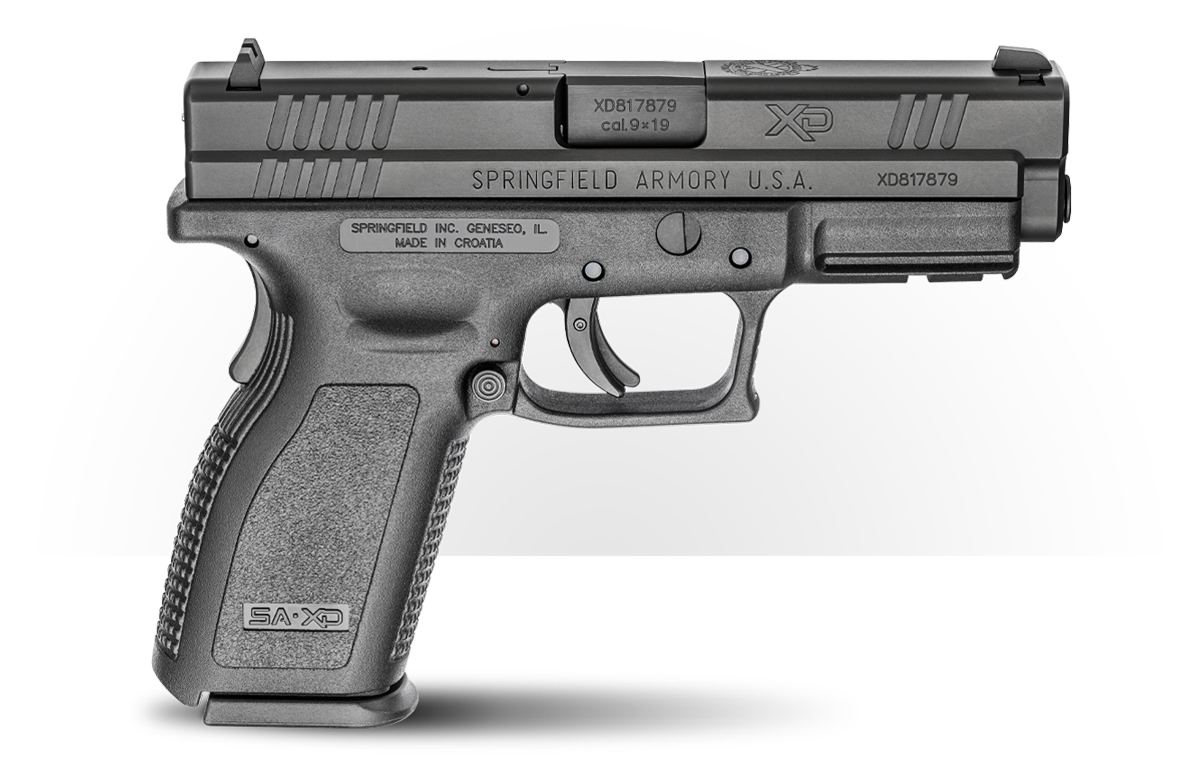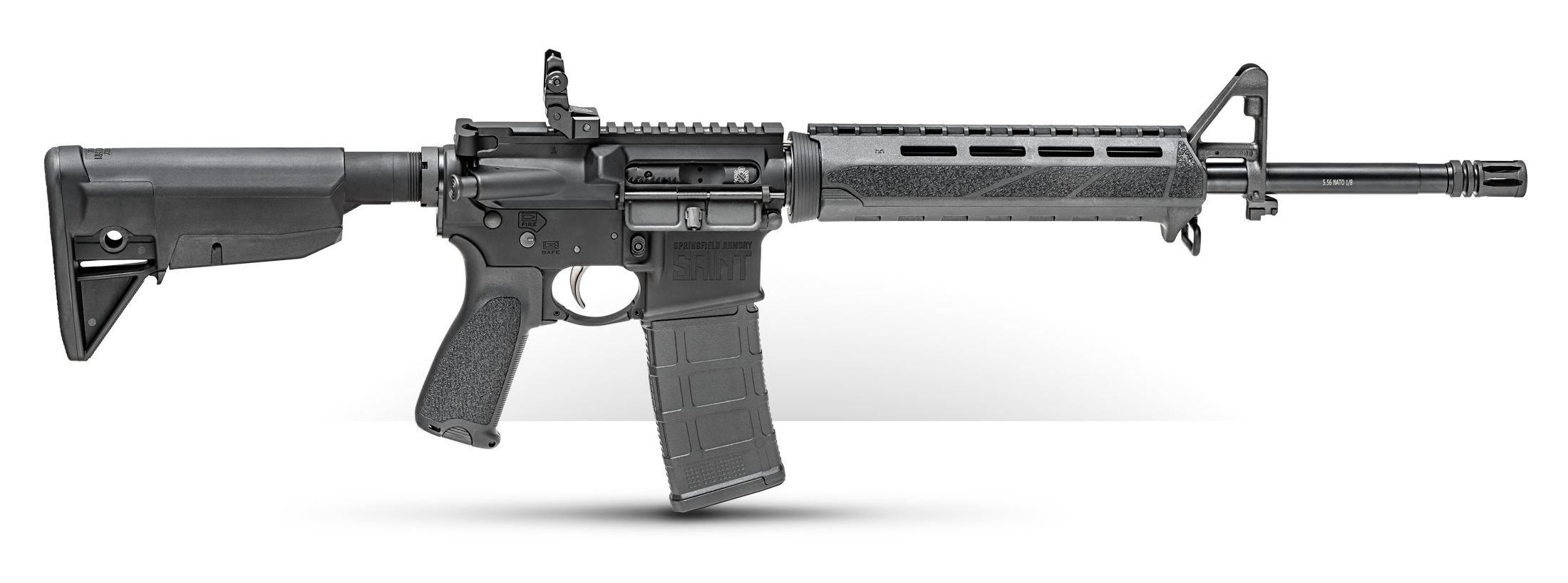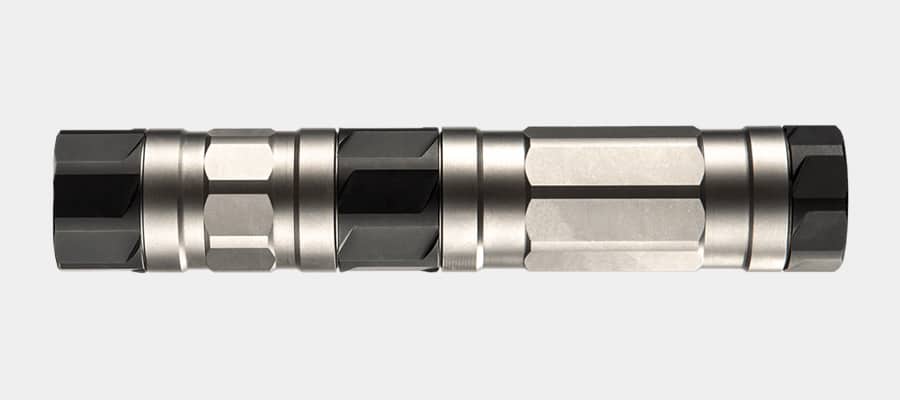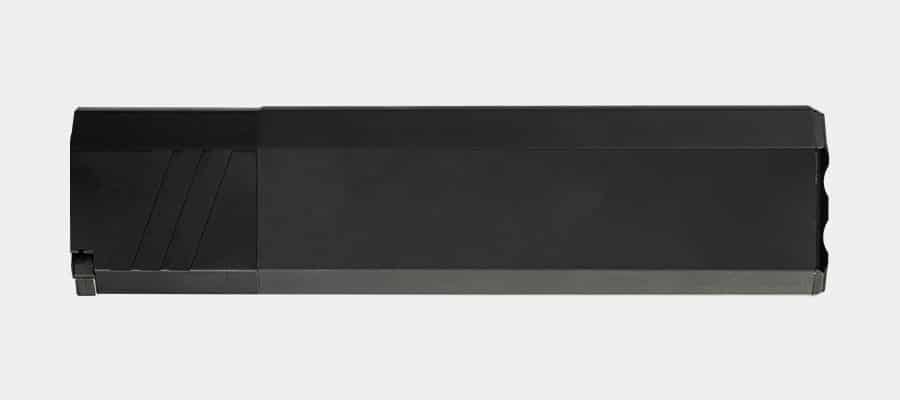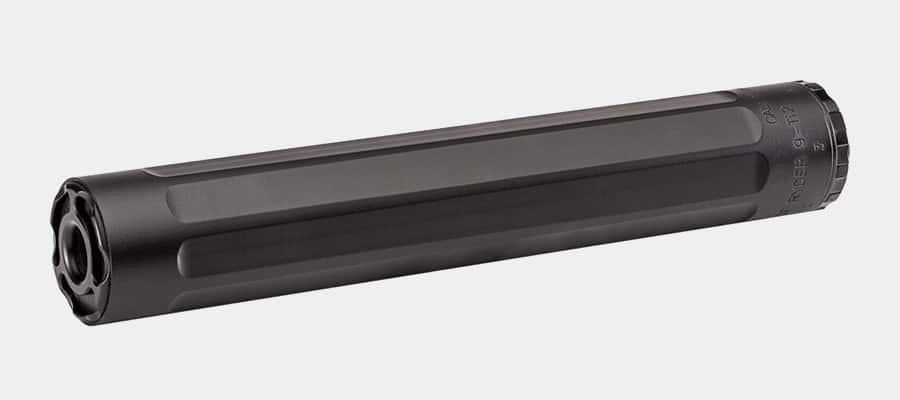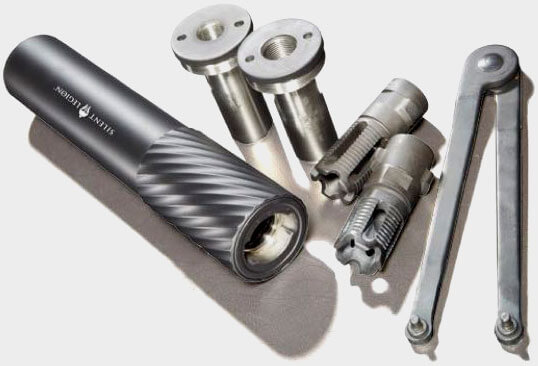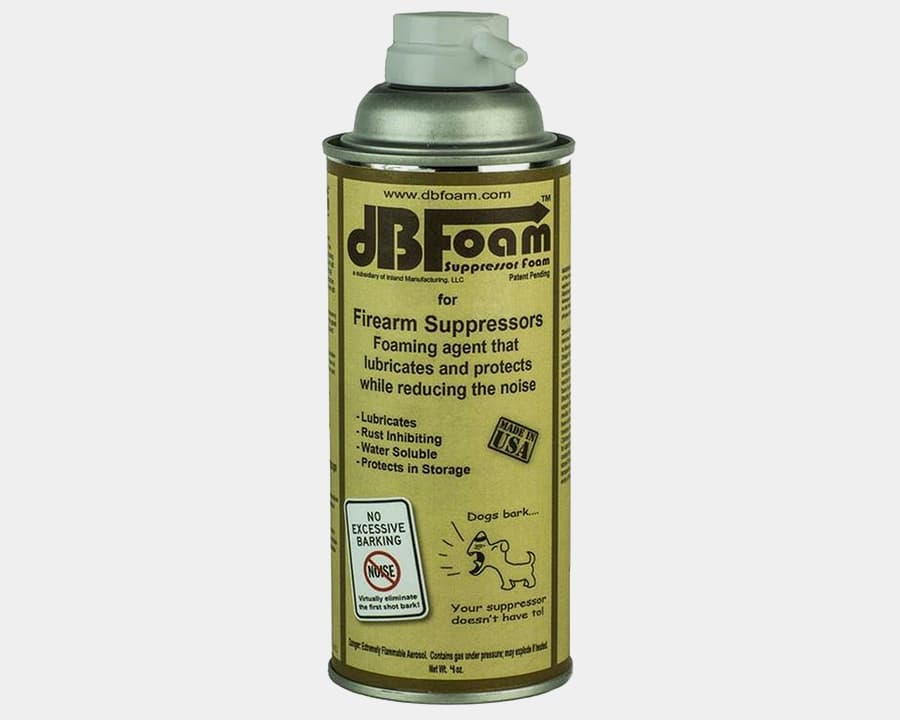One Size Fits All: Multi-Caliber Suppressors Pros & Cons
August 11th, 2021
5 minute read
What can you buy for $200? These days that would get you maybe 400 rounds of cheap steel-cased 9mm Parabellum. $200 will land you a movie-grade Star Wars Stormtrooper helmet for your desk at work. Depending upon the particulars, $200 might also cover a really nice date with a pretty girl. $200 will also buy you one NFA tax stamp.
The sordid particulars of the NFA (National Firearms Act) can be truly confusing. Originally passed in 1934, the NFA regulates such stuff as machine guns, short-barreled weapons, grenade launchers, sound suppressors, etc. If we applied the same standards to the First Amendment that we do the Second, it seems to me you’d have to pay a tax to publish a blog, gather with like-minded friends, or attend church — not that I’m bitter.
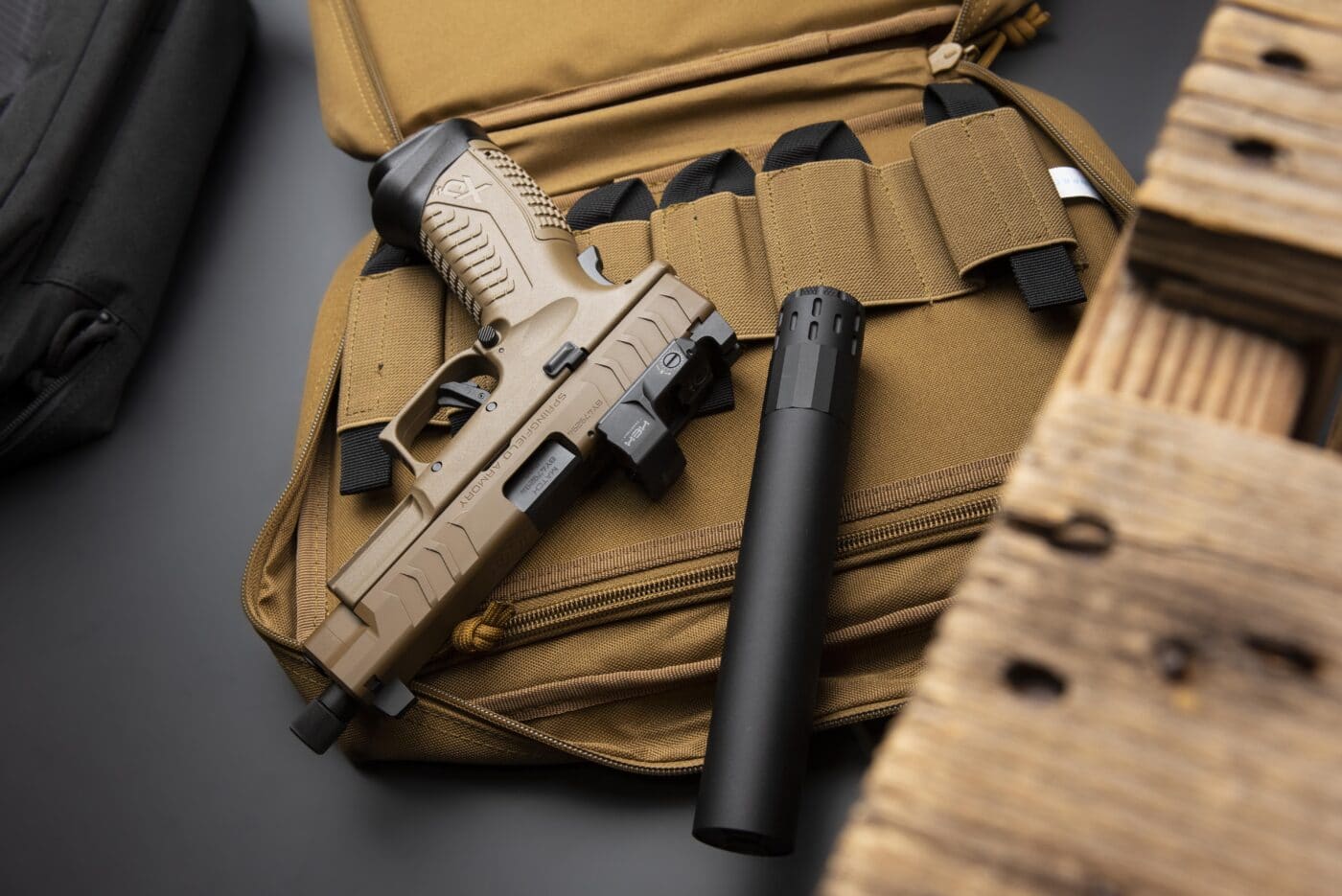
The $200 is onerous, to be sure. However, what really chaps my shorts is the wait. The same government that can put robots on Mars and vaporize a terrorist halfway across the world from a comfortable air-conditioned building in Nevada takes nine months to process the BATF Form 4 required to transfer a sound suppressor. Additionally, a high-quality sound suppressor can cost upwards of a grand.
Add all that stuff together and it behooves us to seek maximum versatility from our suppressor investment. Fortunately, with a little creative accessorizing it’s amazing how much mileage you can get out of a single can. However, this requires a quick review of the basics.
Details
Sound suppressors come in three broad categories. Rimfire cans are generally small and lightweight with an exit pupil scaled for .22-caliber weapons. Some .22-caliber cans like the SilencerCo Switchback are rated up to 5.7x28mm. However, for the most part, these suppressors are designed solely for .22 rimfire rifles and pistols. They subsequently don’t exhibit a great deal of versatility.
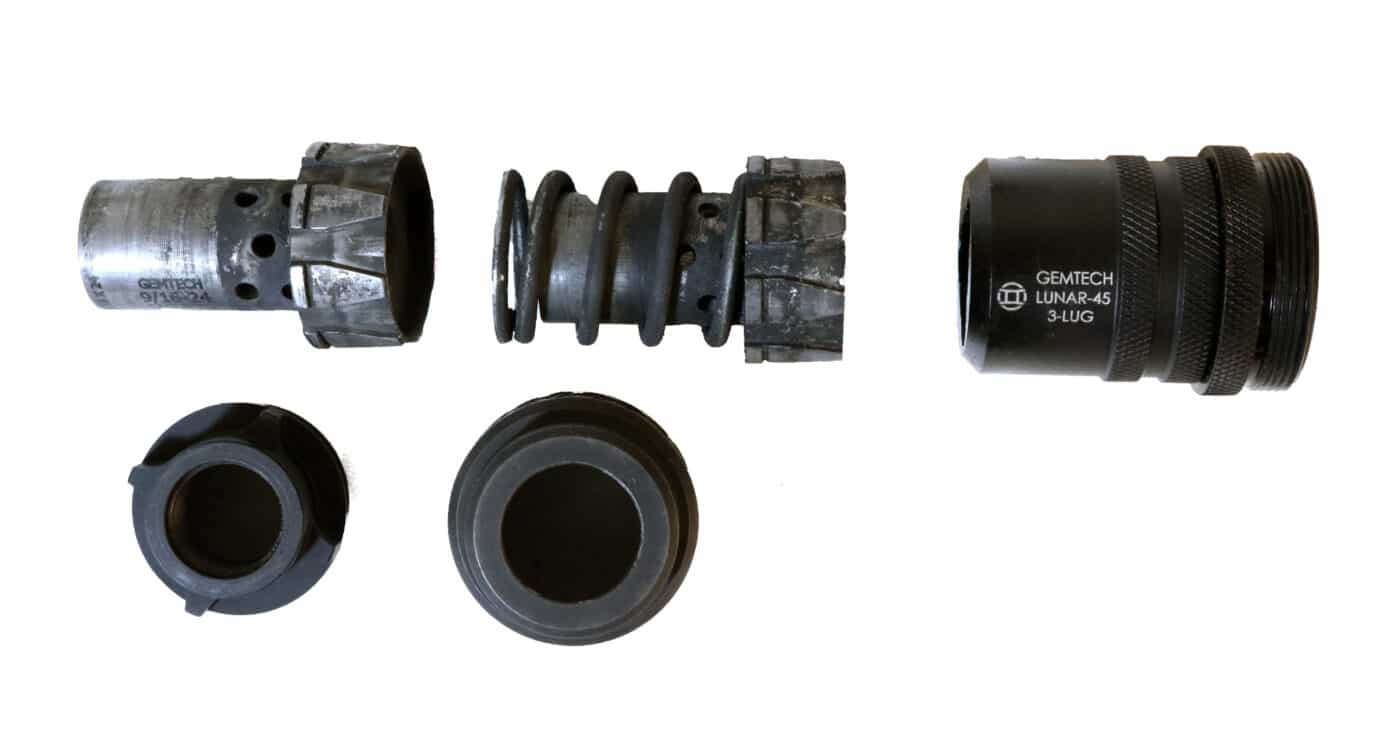
Centerfire pistol cans generally come in 9mm and .45 ACP versions and usually include a Nielson device. The Nielson device is also referred to as a LID (Linear Inertial Decoupler). This inspired contrivance captures a bit of the muzzle chaos from an autoloading pistol and uses that energy to boost the action. Most Browning-inspired centerfire handguns require a LID for reliable suppressed operation.
Rifle suppressors have no need of a LID but are typically larger, heavier and more robust than their pistol counterparts. Pressures from rifle rounds are substantially higher than those produced by pistol cartridges, and rifle suppressors need to be beefier as a result. Most rifle cans come in either .30 or .22-caliber varieties. With this as a foundation, let’s dig deeper.
Pistol Cans
All centerfire pistol suppressors are fairly loud. You can run subsonic rounds through a 9mm can along with a little ablative material like wire pulling gel or Db Suppressor Foam and get the report down to comfortable levels, but most all pistol cans will be noisy. The point is to preserve your hearing should you have to run your gun indoors, not actually sneak up on anybody.
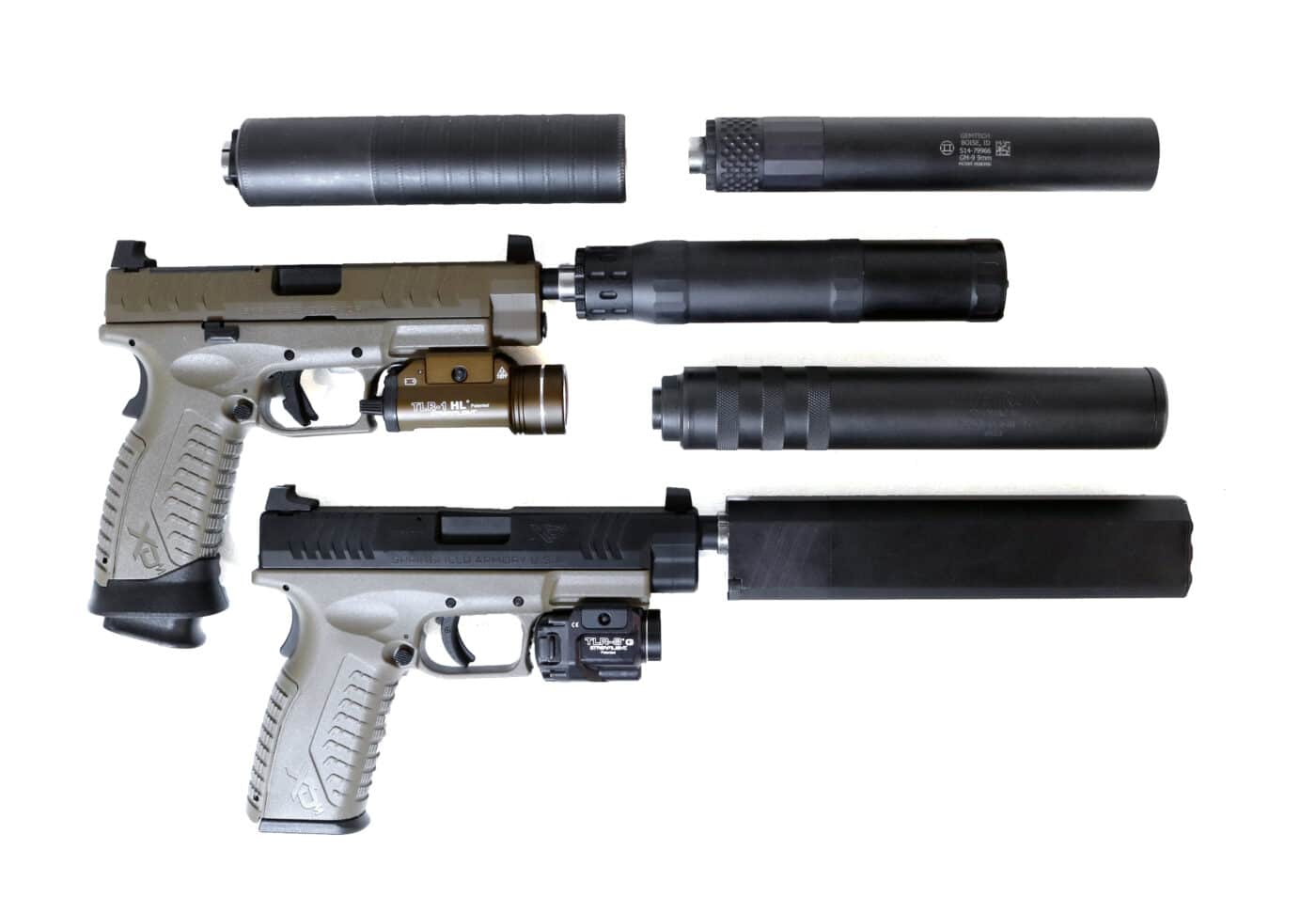
The biggest difference between 9mm and .45 ACP suppressors, beyond the obvious hole through the center, is bulk. .45 ACP cans will invariably be a little longer and a little fatter than their 9mm counterparts. However, these dimensional differences equal greater volume. Greater volume generally means better suppression.
The bigger hole in the end makes a difference in perceived sound, but not as much as you might think. If you look at standardized decibel readings, sometimes .45 ACP suppressors on 9mm handguns are actually quieter than dedicated 9mm cans from the same company. There is more to perceived noise than pure decibel readings, but the size of the hole doesn’t make that big a difference.
Obviously, a .45 ACP can will run on a 9mm pistol but not the other way around. To swap cans between two different calibers requires that you exchange the piston in the LID. The piston is the threaded bit that interfaces with the gun. 9mm and .45 ACP guns use different thread pitches to make it harder to inadvertently put a small-caliber suppressor on a large-caliber weapon.
Rifle Cans
The archetypal multi-caliber rifle suppressor is the Silent Legion Complete Multi-Caliber Kit. This set orbits around a superb maintenance-free centerfire rifle can rated up to .300 Win Mag and comes with four different mounts. These include direct thread mounts designed to interface with both .30-caliber and .22-caliber weapons along with a universal quick-detach mount. To support the quick detach system, there are flash suppressor mounts included for both .30-caliber and .22-caliber guns as well. You could therefore conceivably use this single can on four different rifles as it comes out of the box.
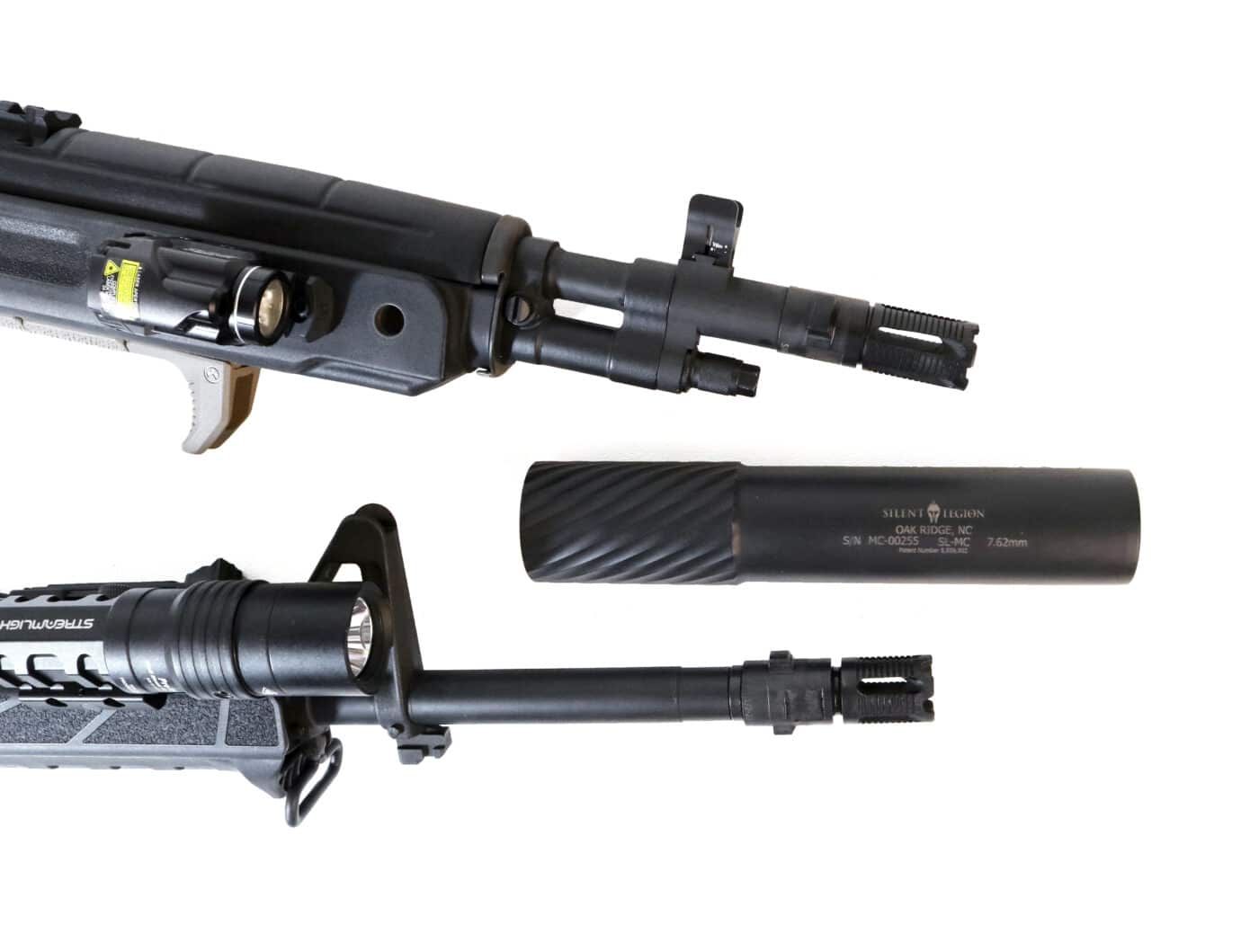
It takes a minute to install the direct thread mounts. It’s not hard, just tedious. However, the quick detach mounts let you pop the can on and off in seconds. In contrast to the pistol cans, I don’t find that the dimensional differences in exit pupils between .22 and .30-caliber cans makes much difference at all.
A centerfire rifle suppressor firing subsonic handloads is the closest I have come to a rig that is genuinely movie-grade quiet. Though I cannot imagine why you’d ever want to, you really could fire that thing in your backyard in the middle of town with no one being the wiser. A full-sized rifle suppressor works like a champ on a .22 rimfire rifle or pistol as well, but it can seem prohibitively heavy and bulky.
Ruminations
A single .45 ACP pistol suppressor like the SilencerCo Osprey or Omega 45K runs just fine on all of my threaded handguns. They are indeed bulkier than the dedicated 9mm sort. However, enduring but a single transfer tax and interminable wait to service most all the handguns in my collection certainly has its appeal. Most .45 ACP cans will run fine on a 9mm pistol with nothing more than an appropriate piston.
I am a great fan of the universal .30-caliber rifle suppressor. I use the same Silent Legion can on everything from a .223 AR pistol to my 5.56mm Springfield Armory SAINT up to my M1A SOCOM CQB as well as my favorite bolt-action .308 precision rifle. Dedicated smaller-caliber cans will always be a bit more compact, but I don’t find the performance difference to be terribly significant.
You may have spare money dripping out of your ears and enjoy waiting on stuff. If so, then I’m sincerely happy for you. For the rest of us, minimizing wait time and expense is an integral part of modern life.
Editor’s Note: Please be sure to check out The Armory Life Forum, where you can comment about our daily articles, as well as just talk guns and gear. Click the “Go To Forum Thread” link below to jump in!
Join the Discussion
Featured in this article
Continue Reading
Did you enjoy this article?

 78
78




